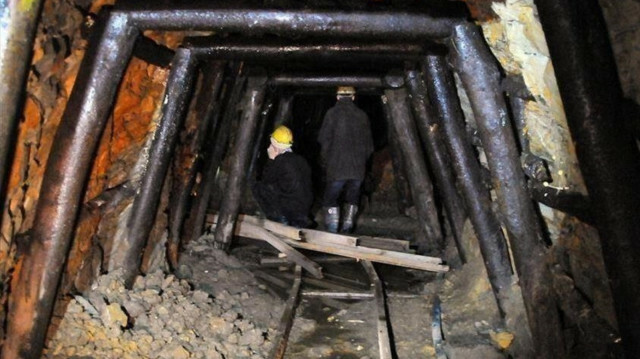
Similar to oil, lithium fast becoming strategic product due to its usage in batteries and non-conventional energy products
The commitments held out by nations at the recently concluded UN Climate Change Conference, or COP26, are largely contingent on the return of peace and stability in Afghanistan, as the country’s vast lithium reserves hold promise for global non-conventional energy requirements.
Analysts believe the focus will shift back to Afghanistan to tap the country's vast lithium reserves, which are used in batteries to power cell phones, laptops, and electric and hybrid vehicles.
Touted as the oil of the 21st century, so far, Argentina, Bolivia, and Chile, collectively known as the Lithium Triangle countries (LTCs), are believed to have the world's greatest lithium reserves.
But, since the transportation from South America is uneconomical for the energy-starved Asian countries, they are now pinning their hopes on the return of order in Afghanistan to harness lithium next door.
Recently, UK-based newspaper Financial Times reported that Afghanistan’s lithium deposits could rival those of the LTCs.
According to Elif Nuroglu, who heads the Economics Department at the Turkish-German University (TAU), like oil, lithium is fast becoming a strategic product.
“Similar to oil, lithium can most certainly be weaponized because it will be used in many fields in the future, from the production of automobiles to autonomous robots and machines,” she said.
The British newspaper also revealed that a group of Chinese mining industry representatives visited Afghanistan recently for an on-spot inspection and to secure mining rights, even as Afghanistan is facing an acute financial and humanitarian crisis.
Chinese daily Global Times has mentioned that uncertainties in terms of policies, security, the economy, and poor infrastructure in Afghanistan are the bottlenecks for the mining industry.
- Security guarantee
Analysts say any mining and production would be conditional on the Taliban ensuring security guarantees for Chinese investments.
“The Taliban may consider providing security personnel for Chinese projects, similar to what Pakistan did for the CPEC (China-Pakistan Economic Corridor) projects,” says Claudia Chia, an analyst at the National University of Singapore’s Institute of South Asian Studies.
Chinese companies were already involved in several major projects in Afghanistan, including the Aynak Copper Mine project, which is the world's second-largest copper mine. But, due to the country's instability and continuous fighting, ore extraction progressed slowly and eventually came to a halt.
A US Special Inspector General for Afghanistan Reconstruction (SIGAR) report had found rampant illegal mining throughout Afghanistan, with more than 2,000 such sites raising money for warlords and the insurgency over the past two decades, in presence of US and allied troops. The report revealed that illegal mining had cost the state up to $300 million annually from 2001 to 2021, until the Taliban takeover of Kabul.
In a survey conducted in 2010, geologists and researchers working for the US army had estimated the value of Afghanistan’s lithium resources, spread in Ghazni, Herat, and Nimroz at a staggering $3 trillion.
The Bloomberg New Energy Finance (BNEF) – a strategic research provider covering global commodities – states that controlling untapped lithium deposits and rare earth elements in Afghanistan would give an edge to Beijing in its competition with the US and Europe for resources. In 2019, the US imported 80% of its rare earth minerals from China, while the EU got 98%.
"If Afghanistan has a few years of calm, allowing the development of its mineral resources, it could become one of the richest countries in the region within a decade," Said Mirzad of the US Geological Survey told Science magazine in 2010.
Until 1979, he was the head of the Afghanistan Geological Survey.
- Soviet’s discovery
The lithium resources in Afghanistan were first discovered by Soviet mining experts in the 1980s. But they had kept it a closely guarded secret until 2004 when a team of American geologists stumbled across an intriguing series of old charts and data at the library of the Afghan Geological Survey in Kabul.
Armed with the old Russian charts, the US Geological Survey (USGS) began a series of aerial surveys of Afghanistan’s mineral resources, using advanced gravity and magnetic measuring equipment attached to a P-3 Orion surveillance aircraft. In 2007, they used a British bomber equipped with instruments that offered a three-dimensional profile of mineral deposits below the earth’s surface.
In 2009, when a Pentagon task force that had created business development programs in Iraq was transferred to Afghanistan, they brought mining experts to validate the survey’s findings, and then briefed Afghan President Hamid Karzai and US Defense Secretary Robert Gates.
Afghanistan's lithium and cobalt assets are critical not only for China but also for another major economy, India.
India has spent $3 billion in aid in Afghanistan in the past to earn goodwill. But, it has been at loggerheads with the Taliban, who were fighting against the presence of foreign troops.
It now appears that New Delhi has made up its mind to accept the Taliban's takeover of Kabul. Of late, it has been extending overtures to new rulers by sending humanitarian aid.
India is targeting about 450 Gigawatt (GW) of installed renewable energy capacity by 2030. At the COP26, Prime Minister Narendra Modi announced that India would be net-zero by 2070, which means that greenhouse gas emissions produced, will be balanced by those that are absorbed.
- India’s interest
India also aspires to become the world's second-largest manufacturer of mobile phones. Under the National Policy on Electronics unveiled in 2019, the country plans to produce one billion mobile phones, including 600 million units for exports. All these targets, however, are linked to the availability of lithium. India currently sources it from Argentina, Bolivia, and Chile.
Observers believe that India’s mobile and non-conventional industries will get a major boost by the diplomatic outreach to the Taliban and the normalization of relations with Pakistan to seek easy access to Afghanistan’s rich mineral resources.
According to a USGS newsletter, besides its usage in batteries, lithium is used in nuclear technology as well. Since it is heat resistant, it is alloyed with aluminum and copper to save weight in airframe structural components. It is also used in certain psychiatric medications and dental ceramics.
Based on extensive minerals' research, the USGS has concluded that Afghanistan may hold 60 million metric tons of copper, 2.2 billion tons of iron ore, 1.4 million tons of rare earth elements (REEs) such as lanthanum, cerium, neodymium, besides the veins of aluminum, gold, silver, zinc, and mercury.
Its initial analysis of a site in Ghazni province showed the potential for lithium deposits as large as those of Bolivia, which has 21 million tons of reserves – so far, the largest in the world.
- Dependent to independent economy
The Khanashin, deposits in the Reg district of Helmand province, are expected to yield 1.1-1.4 million metric tons of REEs.
Afghanistan has long been a foreign aid-dependent country. The prospect of mining lithium and copper can transform Afghanistan’s unstable and aid-dependent economy into a stable and trade-oriented economy.
However, without peace and stability, as well as definitive policy directions from the new interim administration, harnessing the new strategic resource, which has the potential to transform Afghanistan's fortunes by making it energy-rich, will remain a pipedream. The truth is that minerals have no value as long as they remain under the ground.
*Opinions expressed in this article are the author's own and do not necessarily reflect the editorial policy of the Anadolu Agency.
Hello, the comments you share on our site are a valuable resource for other users. Please respect other users and different opinions. Do not use rude, offensive, derogatory, or discriminatory language.
The floor is all yours.








